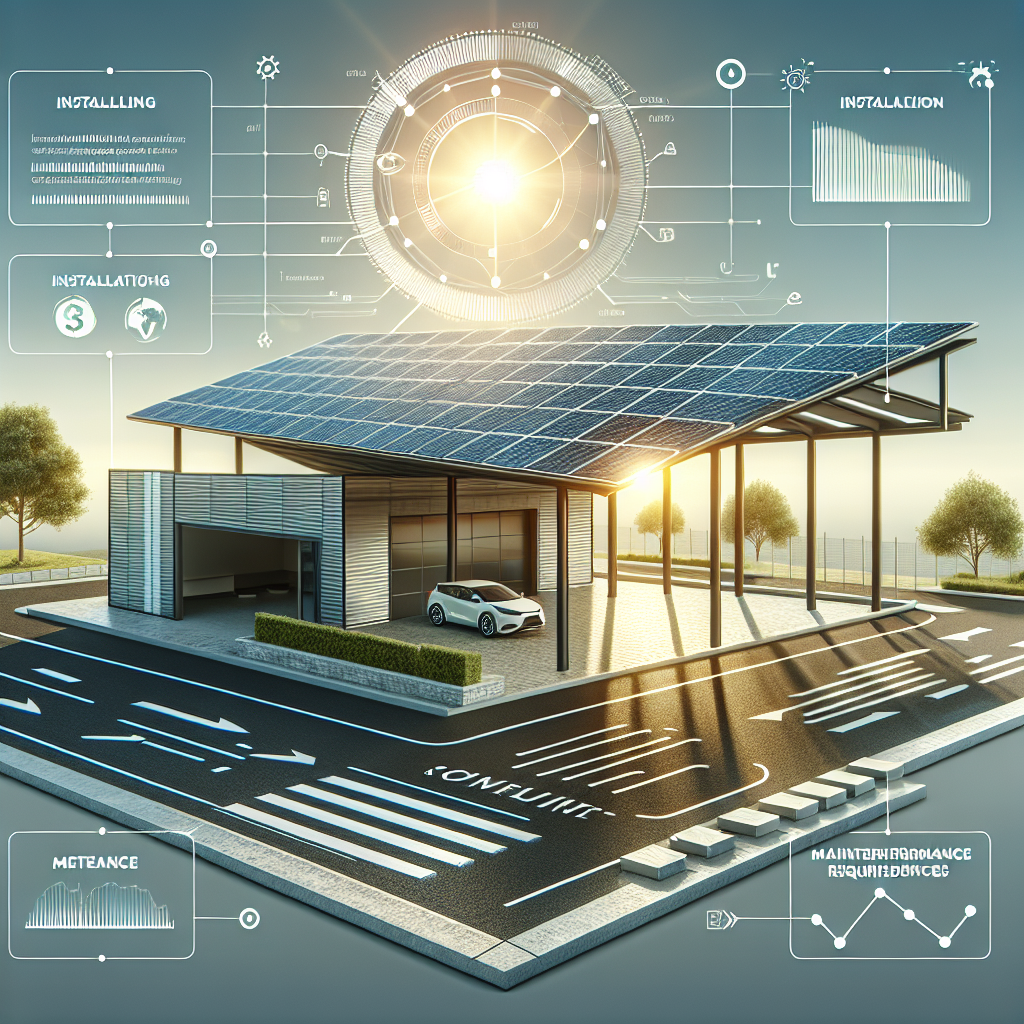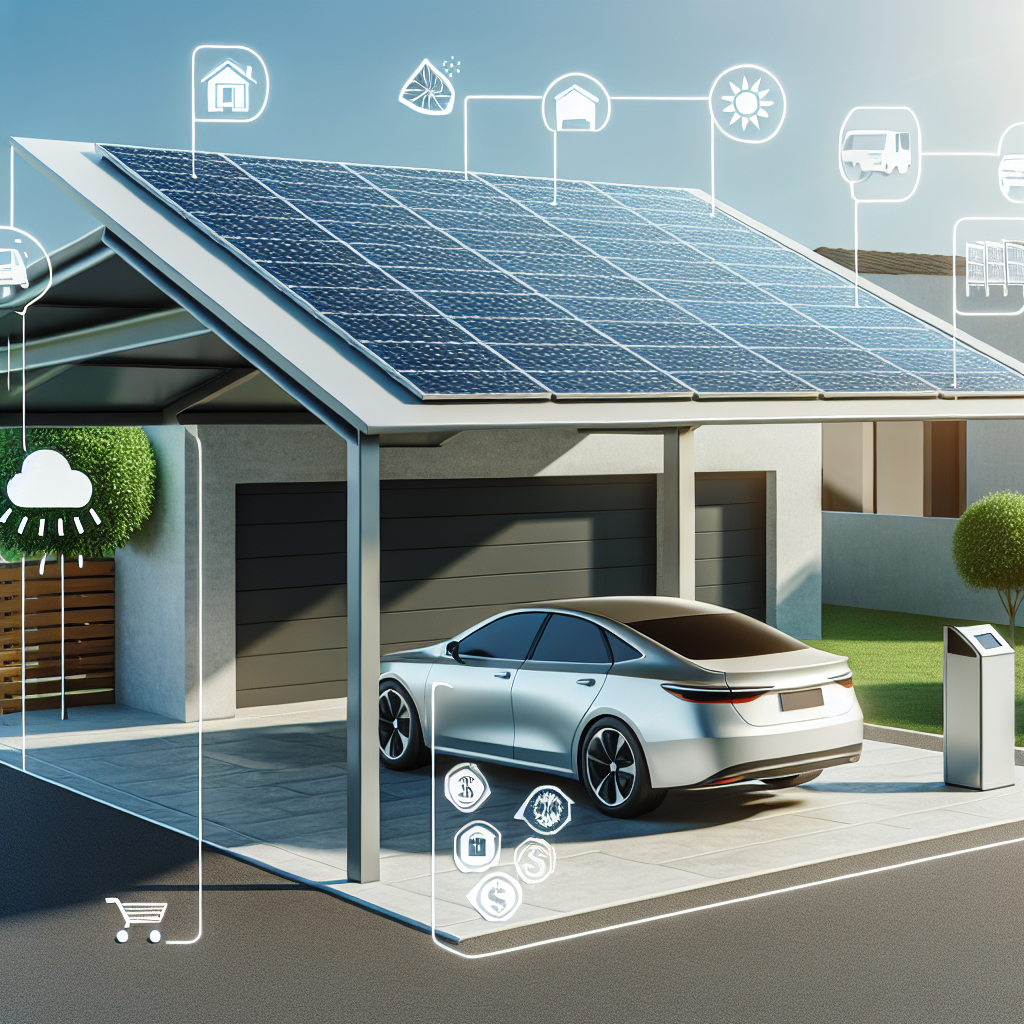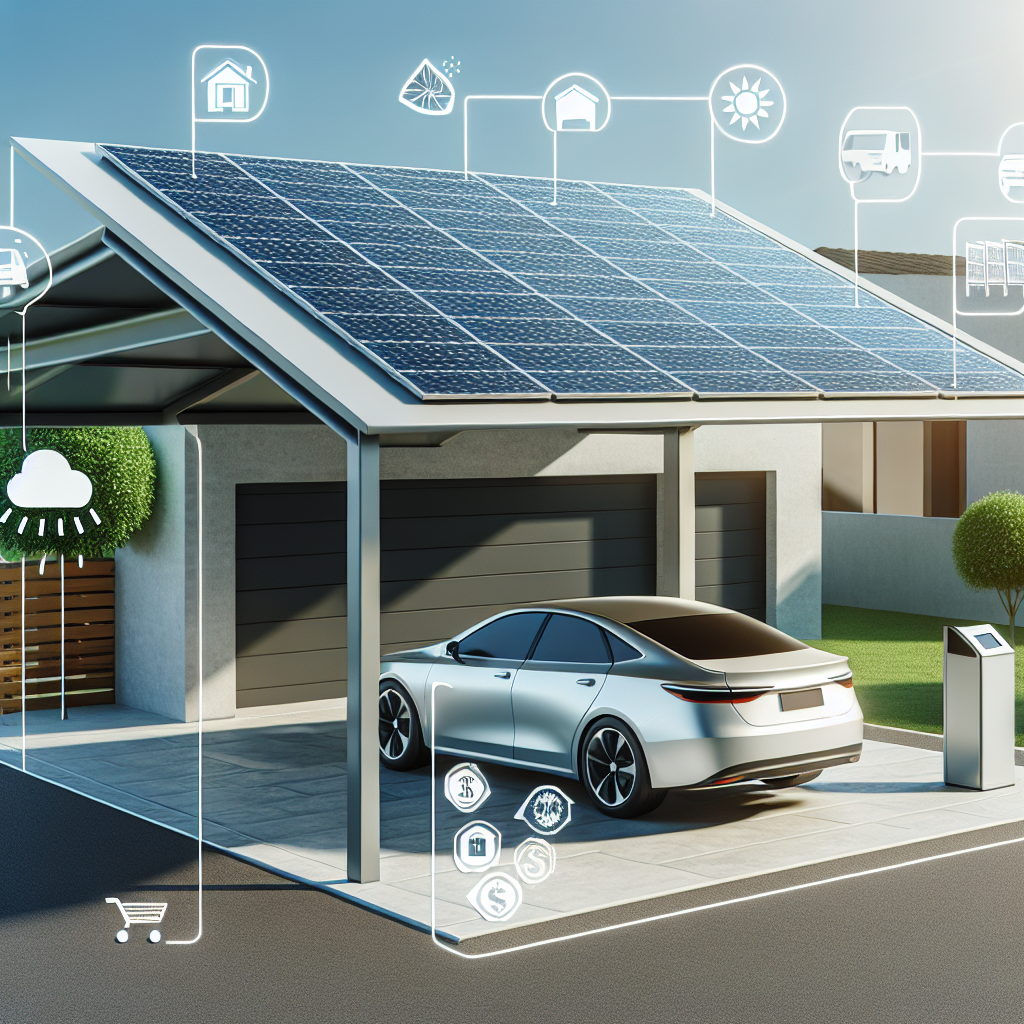Solar carports are becoming increasingly popular as a sustainable and cost-effective solution for both individuals and businesses. If you’ve ever wondered how solar carports work, how much they cost, or if they are suitable for your specific needs, this article is here to provide you with all the answers. From the benefits of solar carports to their installation process and maintenance requirements, we’ve got you covered. So, join us as we explore the frequently asked questions about solar carports and discover how you can harness the power of the sun while protecting your vehicles.
What is a solar carport?
A solar carport is a structure that is designed to provide shelter for vehicles while also utilizing solar panels to generate electricity. It combines the functions of a traditional carport with the benefits of solar energy. Instead of just providing shade and protection for vehicles, a solar carport also enables the generation of clean and renewable energy.

How does a solar carport work?
A solar carport works by utilizing photovoltaic panels, commonly known as solar panels, which convert sunlight into electricity. These panels are installed on top of the carport structure and are strategically positioned to capture maximum sunlight exposure. The solar energy collected is then converted into usable electricity, which can be used to power various electrical systems or even fed back into the grid.
The solar panels on the carport roof are composed of multiple solar cells made of semiconducting material (usually silicon) that absorb photons from sunlight. When the photons strike the solar cells, they knock electrons loose from their atoms, generating a flow of electricity. This process, known as the photovoltaic effect, allows solar carports to generate electricity without any moving parts or the need for direct sunlight.
What are the benefits of using a solar carport?
There are numerous benefits to using a solar carport:
-
Renewable Energy Generation: By utilizing solar energy, carports can help reduce reliance on fossil fuels and contribute to a cleaner and more sustainable energy future.
-
Cost Savings: Solar carports can help offset electricity costs by generating power on-site. This can result in significant savings on energy bills over time.
-
Environmental Impact: Solar energy is a clean and renewable source of power that produces no greenhouse gas emissions or harmful pollutants during operation. By using a solar carport, you are reducing your carbon footprint and helping to combat climate change.
-
Vehicle Protection: In addition to generating electricity, solar carports also provide shade and shelter for vehicles, protecting them from harsh weather conditions such as hail, snow, or excessive heat.
-
Increased Property Value: Installing a solar carport can increase the value of your property, as potential buyers are increasingly drawn to eco-friendly and energy-efficient features.
Are solar carports suitable for all types of vehicles?
Solar carports are versatile and can be designed to accommodate a wide range of vehicles, including cars, trucks, motorcycles, RVs, and even boats. The size and design of a solar carport can be customized to fit specific vehicle types and sizes, ensuring that all vehicles can benefit from the solar power generation and protection provided by the carport.

How much electricity can a solar carport generate?
The amount of electricity that a solar carport can generate depends on various factors, including the size of the carport, the type and efficiency of the solar panels used, the geographical location, and the amount of sunlight available. On average, a properly designed and installed solar carport can generate enough electricity to power a significant portion of a home’s energy needs or offset the energy usage of an electric vehicle.
Can solar carports be used in residential areas?
Yes, solar carports can be used in residential areas. In fact, they are increasingly being incorporated into residential properties as homeowners recognize the benefits of harnessing solar power. Solar carports offer a dual-purpose solution by providing both vehicle shelter and renewable energy generation. They can be a practical and aesthetically pleasing addition to any residential property, bringing together sustainability and functionality.
How are solar carports installed?
The installation of a solar carport involves several steps:
-
Site Assessment: A trained solar professional will assess the site where the solar carport will be installed. Factors such as available space, sunlight exposure, and local regulations will be considered to determine the most suitable design and placement.
-
Design and Engineering: Based on the site assessment, a customized solar carport design will be created. This includes determining the size, orientation, tilt, and number of solar panels required to maximize energy generation.
-
Permitting and Approvals: Before installation can begin, the necessary permits and approvals must be obtained from the local authorities. This ensures compliance with building codes and regulations.
-
Construction and Installation: Once the design is finalized and permits are obtained, the construction and installation process can begin. This involves assembling the carport structure and securely mounting the solar panels on top.
-
Electrical Connections: After the physical installation is complete, the electrical components, including inverters and wiring, will be connected to enable the conversion and distribution of solar-generated electricity.
What is the lifespan of a solar carport?
A well-designed and properly installed solar carport can have a lifespan of 25 to 30 years or more. The durability of the carport structure and the longevity of the solar panels contribute to their long lifespan. Most reputable solar carport manufacturers offer warranties that cover the structure and solar panels for a significant period, ensuring peace of mind for the owners.
Do solar carports require regular maintenance?
Solar carports generally require minimal maintenance. However, a few routine tasks can help ensure optimal performance and longevity:
-
Periodic Cleaning: Regularly cleaning the solar panels with water and a soft brush can remove dust, dirt, and debris that may accumulate over time. This helps maintain the efficiency of the panels by maximizing sunlight absorption.
-
Inspections: Conducting visual inspections of the carport structure, solar panels, and electrical components can help identify any signs of damage, wear, or loose connections. Prompt repairs or maintenance can prevent any potential issues from escalating.
-
Monitoring System Performance: Some solar carports come with monitoring systems that allow owners to track the energy production and performance of the solar panels. Monitoring the system can help identify any deviations from expected performance, indicating a need for maintenance or repairs.
Are there any incentives or rebates available for installing solar carports?
In many regions, there are financial incentives and rebates available for installing solar carports. These can vary depending on the location and applicable policies. It is recommended to research local government incentives, utility programs, and financial incentives to determine what options are available in your area. Incentives may include tax credits, rebates, grants, or even special financing options, all of which can help reduce the upfront costs of installing a solar carport and improve the return on investment over time.
In conclusion, solar carports offer a unique and sustainable solution for both vehicle protection and renewable energy generation. They provide a practical and cost-effective way to harness the power of the sun, reduce electricity bills, and contribute to a greener future. Whether in residential or commercial areas, solar carports offer numerous benefits, including environmental impact, cost savings, and increased property value. With proper installation and minimal maintenance, solar carports can provide clean energy and vehicle protection for many years to come. Explore the incentives and rebates available in your area to make the most of this eco-friendly technology.







